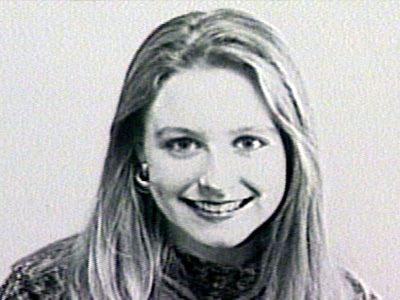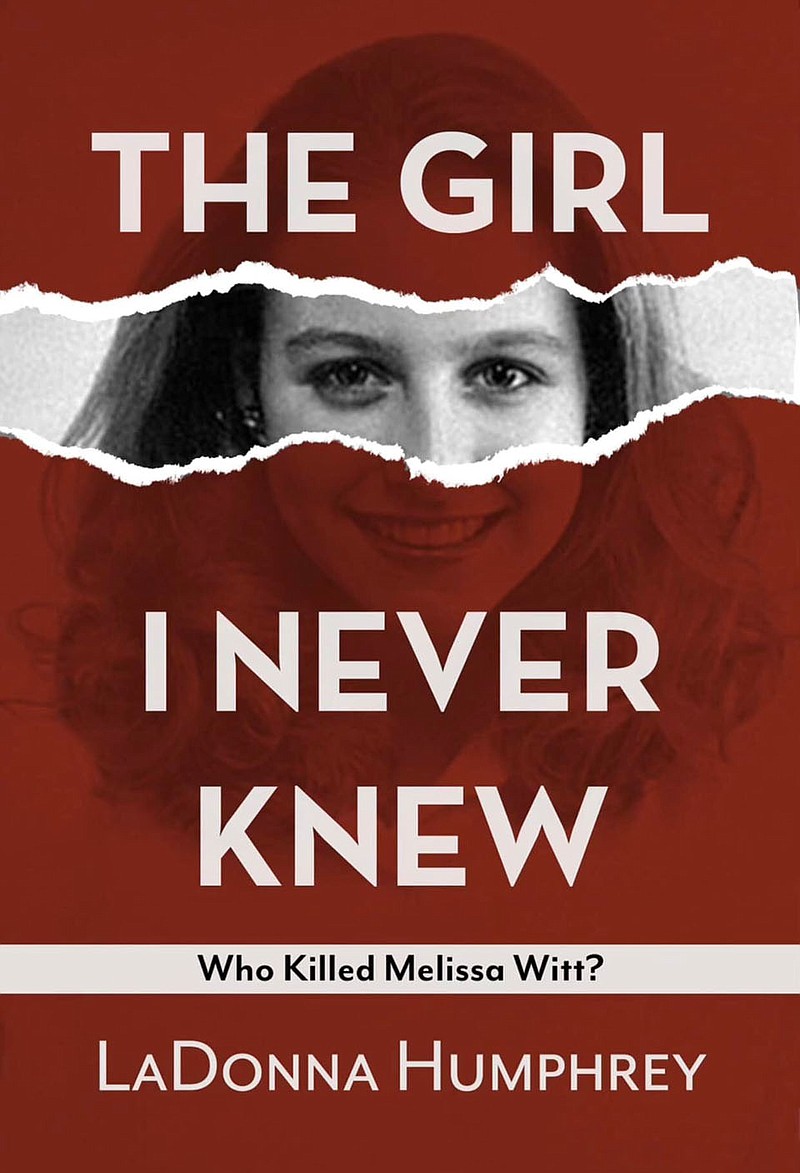There's one unsolved homicide case that has stuck with River Valley detectives for nearly 30 years. In 1994, 19-year-old Melissa Witt went missing from the parking lot of Bowling World after an ordinary day of school and work. Six weeks later, her body was found in the Ozarks. To this day, the person who abducted and murdered her has not been identified or brought to justice.
LaDonna Humphrey hopes to revive interest in the decades-old case with her book "The Girl I Never Knew." Released April 8, the book includes more details of Witt's case than were made public at the time, but not so much as to impede further progress on it, since it's still an open investigation for the Fort Smith Police Department.
"The Girl I Never Knew" is still floating at about #10 on Amazon's list of top 100 books on Kindle and in paperback. The proceeds generated from book sales are going directly back to funding things designed to help solve the case, including billboards and a hotline for people to relay tips related to Melissa -- anything they may have seen or known about her life and situation at the time.
We chatted with Humphrey for this "Hidden Gems."
What initially inspired you to work on getting Melissa Witt's story out when you started about seven years ago?
I had an organization called Let's Bring Them Home, a national missing adults program that provided coordination among agencies and media, as well as resources for families of the missing. I did that about a decade until we saw that our services weren't needed (in the same way) due to the rise of a program funded by the federal government called NamUs.
We wanted to finish our work off strong. ... A lot of us on the board had a journalism background, so we talked about doing a documentary (to draw more attention to unsolved cases). During that meeting, they kept bringing up Melissa Witt's case.
I agreed to call the (Fort Smith) police chief, who had worked with our agency, and set up appointment with Jay C. Rider, Chris Boyd and a few other detectives who had worked Melissa's case. Meeting with the detectives, seeing their passion and how hard they had worked, I thought "That should be what we do."
What was it about Melissa's case that resonated with you and drove you to keep working in hopes of contributing to it somehow?
The detectives agreed to take me out ... to where her body was found. Going out there that day was life changing. I have seven kids, five are daughters and my oldest was 19 at the time. That experience was hard on me as a person, that someone felt like they had the right to take her life and leave her on that mountaintop. I made a vow to do something about that. To get her story back in front of the media and tell it through a documentary.
And how is the documentary going now? Did it come before the book?
We're almost done with it; it's taken the past seven years to make. We have billboards, we've conducted dozens of interviews, and it all culminated in this.
During the pandemic, while we were quarantined to our houses, I couldn't stand our progress stagnating. The case was already over two decades old, and I felt like I needed to do something.
Having written before, I decided to pitch the idea. I wrote a few chapters and had several publishers interested in the book. It's done phenomenally well. The point of the book is to shine light on Melissa's case. I never would have dreamed that it would hit top 20, let alone do what it has.
We're pouring it back into Melissa's case: into billboards, DNA testing, all the things we've been doing out of our own pockets and now we have that tool, we have the book. All the information that was parsed out over the years, that's all in it.
What is it about your book that reaches those who read it?
I wrote it from my perspective, from a vulnerable place, hoping that it will help someone find the courage to come forward (and bring information) that it takes to solve this case. The tip line is frequented. We saw a spike of its use when the billboards went up in December (2021) for three or four months. And the hotline has been active since the book came out. ... I send everything over to the lead investigator on Melissa's case. She deserved her own (hotline). Everything we've done has been to help that case along.
How did you manage to write about an ongoing investigation, with there being certain case information that cannot yet be shared with the public?
To do what I do as a civilian is unique in a cold case. The trust had to be built, because they were not going to release sensitive information. They shared enough pieces (with me) that weren't going to compromise the case, things we can talk about and openly discussed on podcasts.
We've also talked about things others may not think about: the impact on friends and family and the community. Nothing like this had ever happened there before. It changed the community really quickly. Melissa's case set the precedent of (folks) locking their doors at night.
We cover the amount of crime and behind-the-scenes things no one knew about. Melissa lived and worked around some horrific, scary things. We live sheltered in our daily world and don't know what's going on in our backyard.
What were the basic details of Melissa Witt's disappearance and what did you know at the time that it happened?
Retired Fort Smith detective Chris Boyd: Dec. 1, 1994, Melissa went missing. She had been at home that morning, gone to school and then to work at a local dentist office. That afternoon there was nothing out of the ordinary, except that when she was ready to go home, she discovered that her car battery was dead. She got a jump from a guy at Beverly Enterprises, which was in the same complex as the dental office.
So she heads out, as was her custom, to meet her mom, who was in a bowling league. Melissa would meet with her on those nights to grab something to eat and go home. She goes to the bowling alley, but never makes it inside. Her mom of course doesn't know. She (just) figures she isn't going to come.
There were witnesses to an incident involving her that day, is that right?
Boyd: In the Bowling World parking lot was a teen girl and a kid or two who had been sent outside since they were noisy. Those kids apparently noticed an altercation between a man and woman; unfortunately they (didn't get a good look) and only noticed a verbal altercation.
So Melissa disappears. Her mom gets home and starts calling relatives, friends and police.
Melissa's car was still there at the bowling alley, and there was blood on the pavement. She was abducted there and put up some kind of resistance.
What was so unusual or compelling about this case?
Boyd: There was a lot of public attention because this was not the kind of girl to go missing, not the kind of girl to be mad enough to not come home. She had no drug or alcohol problem.
Retired Fort Smith detective Jay C. Rider: It was just the fact that good people like Melissa (and her mom Maryann) with no intention of hurting anyone else having everything ripped away in one day. You look back and see Maryann trying to raise her daughter, her daughter trying to take care of herself, and an [SOB] comes along and kills her. It's that that keeps the driving force going.
Has anything changed since Melissa's case?
Boyd: Between '95 and now, missing persons cases were handled a lot differently. Missing persons were not as prevalent as today in NCIC, and now it's taken way more seriously. Former Fort Smith Police Chief Randy Reed had every single case entered into NCIC -- all of them, even the old ones. He was adamant about that; he was the one who came along and helped modernize a lot of things that hadn't been to that point.
And there are huge advancements in DNA now, it can connect familial DNA to all kinds of people, like 23andMe, while you might not pinpoint a suspect, you might pinpoint a relative.
When was her body found?
Boyd: On Jan. 13, 1995. I got a phone call ... from Sheriff Ross. They had discovered a body in the Ozarks around White Rock above the Turner Bend area, on Highway 23. He said "I think it's your missing girl." I had him describe the body to me and I knew he was right, it had to be her.
What is the role of the public here?
Boyd: The public can help develop new leads. Based on Jay C's and my experience and LaDonna's great ideas for different techniques we didn't have in the '90s, we can brainstorm what can be done with it, then meet with the current investigator, Brad, and come up with collective idea about what we could do and next steps to take.
What would you say to folks who can't believe this would happen in our region?
Boyd: I worked investigations for 39 years, and I can say that people don't know what's going on around them. I've seen some terrible cases. There's not enough people to devote them full time to cold cases.
Humphrey: Be more aware of your surroundings. I would want them to see she wasn't able to overcome the evil that confronted her that night and (I hope) people get fired up about it. Start with those conversations, educating yourself and make sure to pass that on to those you love and not be afraid to talk about the (very real possibility of) rape or other forms of violence.
Do the tips help? Will there ever be too much information coming in from the public?
Boyd: We've followed countless false leads, and we don't mind doing that because one will be the right lead.
Rider: We're getting a lot more information since LaDonna's book has come along. It's doing a lot, keeping the case alive.
 Detectives who worked Melissa Witt’s case early on say it stuck out from others because there “was nothing in Melissa’s orbit that anybody recognized that would have led to this. If there was a person around her that was capable of (abducting and murdering her), she was unaware until the day it happened.” (Courtesy photo)
Detectives who worked Melissa Witt’s case early on say it stuck out from others because there “was nothing in Melissa’s orbit that anybody recognized that would have led to this. If there was a person around her that was capable of (abducting and murdering her), she was unaware until the day it happened.” (Courtesy photo)More News
NoneFast Facts
If you know anything about Melissa “Missy” Witt or the person who abducted and murdered her, visit whokilledmissywitt.com or call the tip line at (800) 440-1922.
You can find copies of “The Girl I Never Knew,” news and events related to the case and book at thegirlineverknew.com, or join the community interested in solving her case at facebook.com/whokilledmissywitt.
A sequel to “The Girl I Never Knew” will be released later this year. “Strangled” by LaDonna Humphrey with Alecia Lockhart will be available Oct. 28.
